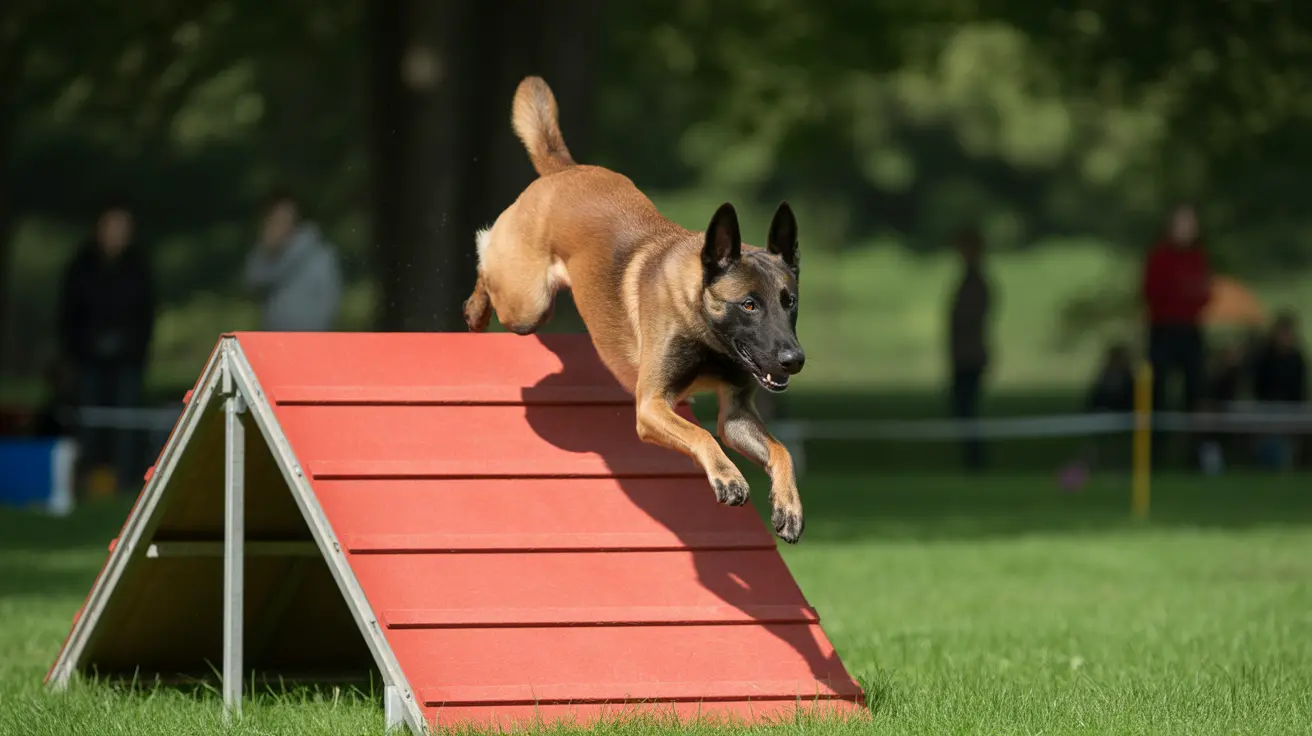Have you ever wondered about your dog's jumping capabilities? Whether you're concerned about fence heights or interested in canine athletics, understanding how high a dog can jump is crucial for both safety and training purposes. Let's explore the fascinating world of canine jumping abilities and what factors influence them.
Most dogs can jump between one to three times their shoulder height, though this varies significantly based on breed, age, health, and training. While an average medium-sized dog might clear 4-5 feet, some exceptional athletes have achieved remarkable heights exceeding 6 feet in controlled settings.
Natural Jumping Capabilities of Different Dog Breeds
Different dog breeds exhibit varying jumping abilities based on their physical structure and genetic predisposition. Border Collies, Belgian Malinois, and Australian Kelpies are renowned for their exceptional jumping capabilities, regularly clearing obstacles of 6 feet or more.
Long-legged breeds typically demonstrate superior jumping abilities compared to shorter breeds. For instance, a Belgian Malinois can jump up to 8 feet high, while a Corgi's jumping height is naturally limited by its shorter legs.
Record-Breaking Jumps and Athletic Achievements
The current Guinness World Record for the highest jump by a dog stands at an impressive 75.5 inches (just over 6'3"), set by a greyhound named Feather in 2017. Even more remarkably, some dogs have demonstrated the ability to scale walls approaching 10 feet by combining jumping with climbing techniques.
Factors Affecting Jumping Height
Physical Condition and Age
A dog's jumping ability is heavily influenced by their physical condition. Young, fit dogs typically jump higher than their older or less active counterparts. Muscle strength, particularly in the hind legs, plays a crucial role in determining jumping capability.
Training and Motivation
Professional training can significantly enhance a dog's jumping ability. Dogs involved in agility sports often demonstrate superior jumping skills compared to untrained pets. Additionally, motivation plays a crucial role – a dog chasing prey might jump considerably higher than during casual play.
Safety Considerations and Containment
For dog owners concerned about containment, a 6-foot fence is generally considered adequate for most breeds. However, particularly athletic or determined dogs might require higher barriers or additional deterrents. It's important to consider both vertical height and climbing potential when designing outdoor spaces.
When training young dogs, it's crucial to wait until they're at least 12-15 months old before encouraging significant jumping activities, as earlier training could risk injury to developing joints and bones.
Frequently Asked Questions
How high can an average dog jump based on its breed and size?
Most dogs can jump 1-3 times their shoulder height. For example, a medium-sized dog standing 2 feet tall might jump 4-6 feet high, while smaller breeds typically jump proportionally less.
Which dog breeds are known for the highest jumping ability?
Border Collies, Belgian Malinois, Australian Kelpies, German Shepherds, and Australian Shepherds are renowned for their exceptional jumping abilities. These breeds regularly demonstrate impressive vertical jumps in both working and competition settings.
Can dogs really jump over a 6-foot fence, and how can I prevent escape?
Yes, some athletic breeds can clear 6-foot fences. To prevent escapes, consider installing taller fences, adding inward-facing toppers, or providing adequate exercise and mental stimulation to reduce escape attempts.
At what age is it safe to start training a dog to jump higher?
Wait until your dog is at least 12-15 months old before beginning serious jump training. This ensures their growth plates have closed and their joints are fully developed, reducing the risk of injury.
What factors affect a dog's jumping ability, such as health and training?
Key factors include age, physical condition, breed characteristics, training level, and motivation. Health issues like joint problems or obesity can significantly limit jumping ability, while regular exercise and proper training can enhance it.
Understanding your dog's jumping capabilities is essential for both safety and training purposes. While some dogs can achieve remarkable heights, it's important to consider individual limitations and always prioritize safety in both training and containment situations.






